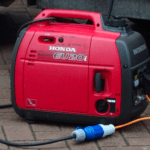Power supply devices can convert input energy, such as solar energy, and channel it into functional electricity as an output energy. They also power many things, like computers! Consequently, it’s important that the devices are as efficient as they possibly can be due to the high demand and widescale availability.

Of course, good products are defined by their sustainability. However, 24v dc power supply efficiency refers to the ‘AC’ power going into it divided by its output ‘DC’ power, to see how much energy is used and wasted. The balancing of this ratio is where much of the focus lies to eliminate excess energy.
Ultimately, it all aims to utilise energy in the best ways possible. Here’s a quick rundown on how this need is being dealt with.
Eliminating Excess Energy
Power supply components work in wonderous ways. For example, they will always generate a higher input of energy than the actual output.
Remember, some of the energy drawn is attributed to the running of the supply and the functionality of its components, so it’s essentially always generating more wattage than what your devices are getting out of it.
Power supply efficiencies aim to whittle down this excess. For example, a surge in superfluous power can overcharge and overheat components in a computer and damage them, so it’s important that all power is attributed in the appropriately proportioned wattage. If not, computers can be broken and data can be lost, which can obviously send anyone into a spiral of woe.
Going Digital
It’s well known that ‘going digital’ is a term that is frequently wrapped up with technological progression. Though it’s overarching results can be a mixed bag for society, what is digital mostly indicates convenience and efficiency.
Digital technology has infiltrated infrastructures and changed the way people work and think, and the same is true in the power supply arena too.

Digital power supplies are gradually becoming more popular due to their boost in efficiency. They offer greater flexibility that helps strike that AC and DC balance with precision.
For example, a digital power supply makes it possible to change the output mid-use, and helps components adapt to temperature shifts. Ultimately, they provide more opportunity to monitor and supervise the power flow.
Additional Resource: What is the Difference Between a Sensor and Transducer?
Constant Variation
When a product starts to become more varied, it can cater to more people. After all, each consumer has a different use of power, and companies need to ensure they can match the buyer’s individual needs.
For power supplies, the efficiency of them is a charted spectrum, ranging from a wide variety of mechanical formats to the ranges of wattage.
The growing need is met by X Power’s range of goods, providing a host of power solutions that can cater to all. It’s through these efforts that power supplies are not an exclusive product for those deemed exclusively worthy, but a widely available commodity for the masses. Ultimately, these kind of results help eliminate the quantities of wasted energy.
Join 25,000+ smart readers—don’t miss out!






